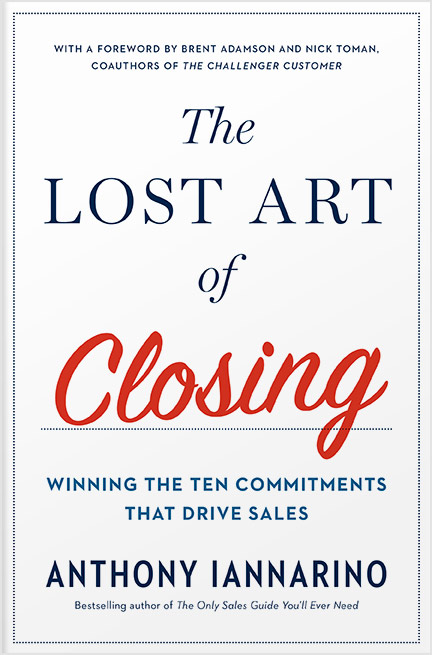The Gist:
- When you create uncertainty, you make it difficult for your client to move forward with change.
- The more complex the sale, the more certainty your contacts need to agree to move forward.
- You establish yourself as the right partner when you create certainty for your prospective client about the decision, the solution, the partner, and their ability to execute.
The issues, challenges, and problems that give rise to your prospective client’s decision to explore change indicates that the devil they know is wreaking enough havoc that they’re willing to do something about it. A recognized risk to their business and their results is enough to motivate them—and often to compel them—to seriously consider change.
Because that motivation is beneficial for you, it’s easy to overlook that the change the client is considering is also a risk, or more accurately, a number of risks. You better enable your prospective clients to move forward when you sell in a way that helps create certainty.

Is This the Right Decision?
It is very easy to make a decision when it is nothing more than a transaction. When there are no real or lasting negative consequences for making a poor decision, investing a small amount of money and time can easily replace whatever lemon you bought. However, when the decision is one your client is rarely charged to make, and when failure comes with potentially devastating negative consequences, the increased risk is often as powerful a force as their current challenge.
When a result is critical to your client’s business, the people making that decision are going to have concerns about making any decision to change. No one wants to be responsible for deciding to change, only to find themselves with a new and different set of challenges for which they were unprepared. The responsibility to decide to change also comes with accountability for the results, whether they are good or awful.
One of the reasons clients don’t change, even when it is necessary, is because they lack the certainty that they are making the right decision—and certainty about all the smaller decisions they must make along the way.


Is This the Right Solution?
The client who’s trying to determine whether they should change now or continue to muddle through is also trying to gain enough confidence in a replacement solution. The reason they keep asking you “will this work?” is because they’re asking each other the same question. A lack of certainty in a potential solution can make it difficult for your contacts to decide to change.
Greater certainty that the solution is going to work increases the client’s certainty about both the deal and the broader change. One way you create certainty in the solution is by building consensus with the people making the decision—as well as the people who are going to need to execute your solution. Speeding past the conversations that create certainty will tip the balance in favor of inaction.
The more certainty your contacts have around your solution, the easier it is to select that solution and to brave the risks of changing how they do business.


Is This the Right Partner?
Your prospective client is also trying to gain certainty about who is going to provide the solution. When contacts aren’t able to confidently select a partner, the need to change and the right solution may not be enough to let the client decide to change.
Your contacts may not be consciously judging everything you say and do as part of a risk assessment. But the subconscious mind picks up signals that murmur something isn’t quite right. Some of the factors that can prevent certainty include being unprepared, lacking the ability to answer the client’s questions, failing to keep the commitments you make, and going faster than the client.
Creating certainty is an investment of time, coupled with the intention of executing something that might be described as a facilitated needs-based buyer’s journey. One of the reasons we don’t create certainty within a group of contacts deciding to change is because we don’t recognize that uncertainty is the culprit when a client is compelled to change but still doesn’t.
Can We Execute and Succeed?
One of the internal conversations your clients are engaged in is whether or not they can execute your solution and succeed in making the change they are pursuing. The fear of failure is a powerful force when it comes to change. Any concerns about an inability to successfully produce better results can make it easier for the client to do nothing.
One mistake that causes uncertainty is not explaining exactly what changes your client will need to make, as well as all the things they are going to need to do to successfully produce the results they need. Failing to provide a realistic plan or downplaying the challenges may seem reassuring, but it can actually create greater uncertainty.
Even though you might be fearful of describing the work the client must do and the challenges you must overcome together, that conversation demonstrates that you aware of your client’s risk, that you have analyzed and have experience dealing with those challenges, and that you know how to dispatch any problems that would prevent success.
The Lens of Certainty
Viewing the sales conversation through the lens of certainty can drive the intentions and behaviors that reduce the power of the risk and uncertainty. The point isn’t to remove the risk completely, but to make it easier for your clients to move forward—in spite of the risk.
Helping your clients gain the certainty to change, confidence in the solution and the partner, and assurance that they can both execute and succeed, enables them to move forward with their decision and your deal.
Do Good Work:
- Recognize the areas where a lack of certainty causes your clients concern.
- Help your contacts discover what they need to be certain in the many decisions they need to make to pursue their objectives.
- Adapt your sales approach to ensure that you create certainty by engaging in the right conversations and demonstrating your ability to ensure your clients succeed.

Essential Reading!
Get my 2nd book: The Lost Art of Closing
"In The Lost Art of Closing, Anthony proves that the final commitment can actually be one of the easiest parts of the sales process—if you’ve set it up properly with other commitments that have to happen long before the close. The key is to lead customers through a series of necessary steps designed to prevent a purchase stall."
Buy Now







.jpg?width=768&height=994&name=salescall-planner-ebook-v3-1-cover%20(1).jpg)



Comments